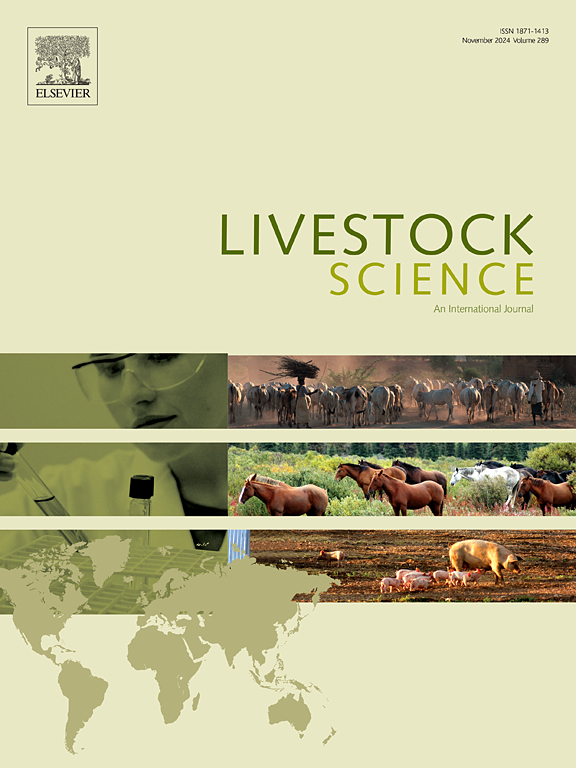Supplementing steers up to 43 % canola meal had no negative effects on either ruminal parameters or the degradation characteristics of lucerne hay
IF 1.8
3区 农林科学
Q2 AGRICULTURE, DAIRY & ANIMAL SCIENCE
引用次数: 0
Abstract
Interpreting in sacco and in vitro results needs to be undertaken with caution, as many variables, such as diet, can influence the rate of degradation and degradation kinetics. Four ruminal fistulated donor steers were fed rations based on low quality cereal roughages with one of four inclusion levels of canola meal, viz. 0 % (control), 13 %, 27 % or 43 % on a DM basis. Two degradation methods, in sacco and in vitro Ankom Daisy™ incubation, were used to determine the degradation kinetics of ground lucerne hay (lucerne standard) over 72 h Supplementing donor steers up to 43 % canola meal had no negative (P > 0.05) effects on the degradation of the ground lucerne standard, regardless of which incubation method was used. The average ruminal NH3-N concentration increased (P < 0.001) with increasing levels of canola meal in the ration, while total volatile fatty acid concentrations and molar proportions were within the normal range for microbial synthesis. Average ruminal pH was not affected (P > 0.05) by the ration fed to the steers and did not decrease below 6.3, indicating canola meal was safe to include at 43 % in a basal, low-quality ration for cattle.
求助全文
约1分钟内获得全文
求助全文
来源期刊

Livestock Science
农林科学-奶制品与动物科学
CiteScore
4.30
自引率
5.60%
发文量
237
审稿时长
3 months
期刊介绍:
Livestock Science promotes the sound development of the livestock sector by publishing original, peer-reviewed research and review articles covering all aspects of this broad field. The journal welcomes submissions on the avant-garde areas of animal genetics, breeding, growth, reproduction, nutrition, physiology, and behaviour in addition to genetic resources, welfare, ethics, health, management and production systems. The high-quality content of this journal reflects the truly international nature of this broad area of research.
 求助内容:
求助内容: 应助结果提醒方式:
应助结果提醒方式:


